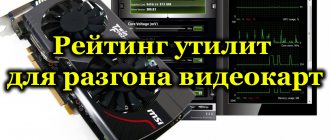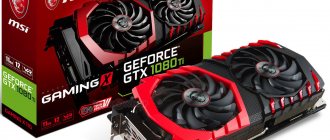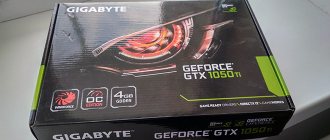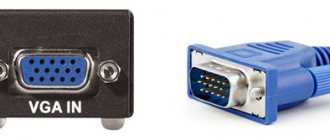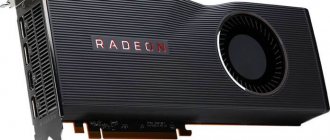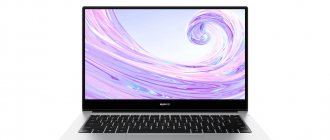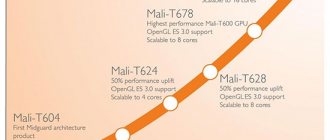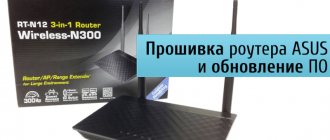The best processors to buy in mid-2020
Six months have passed since the previous article was written, and a lot has changed on the market: interesting processors from AMD based on the Zen 2 architecture came out, solutions based on Zen and Zen+ fell in price, and with them the latest generation processors from Intel.
So it's time to take a look again at which CPUs turn out to be the best for different tasks at each price point. Minimum level: “royal” AMD Athlon 200GE
2 cores, 4 threads, a frequency of 3 GHz, integrated Vega 3 graphics, capable of streaming 4K video from Youtube - and all this for the cost of replacing the battery on an iPhone (2.5 thousand rubles). Of course, this processor quickly became a bestseller and has firmly held the title of best ultra-budget CPU for a year now. Of course, during this time the Athlon 220GE, 240GE and even the 300 line managed to come out, but in reality the performance increase there is at most 10%, and taking into account the fact that they are all unofficially overclocked, there is absolutely no point in overpaying for older solutions. In addition, even if you are not interested in overclocking, it is unlikely that such a difference in performance will be noticeable and important for office tasks.
Its closest competitor from Intel is the Pentium G5400, but it costs an average of a thousand rubles more and has weaker integrated graphics. So if you need a PC for working with documents, watching videos, surfing the Internet and basic games, then the Athlon is the ideal solution.
Basic work and gaming level: AMD Ryzen 3 1200 and 2200G - who wants 4 cores for 4 thousand?
Under pressure from the increasingly cheaper Ryzen 5, the junior Ryzen 3 line is already simply indecently cheap - for example, the 4-core Ryzen 3 1200 can already be found for less than 4 thousand rubles. In fact, this is the simplest gaming processor at the moment: taking into account a slight overclocking to 3.5-3.7 GHz, it will run any modern game without freezes, lags and unloaded textures. Of course, you definitely can’t count on 100 fps, but the very possibility of comfortable gaming on a CPU costing 4 thousand rubles is already pleasant.
However, the Ryzen 3 1200, like most other AMD processors, does not have integrated graphics, meaning you absolutely need a discrete graphics card to run your PC. But if you are not going to play heavy games, and 2 cores are still not enough for your tasks, then it makes sense to take a closer look at the Ryzen 3 2200G, which costs about 5.5 thousand rubles. In terms of the processor, it is identical to the Ryzen 3 1200 - the same 4 cores with a frequency of ~3.5 GHz on the Zen architecture - but in terms of graphics it is quite interesting, because it has Vega 8 built into it. In terms of performance, it is 10-20% weaker than the plug "GT 1030, which alone costs as much as this entire processor, so it can handle most user tasks and simple online games.
Mid-range processors for gaming and work: AMD Ryzen 5 2600, Ryzen 7 1700 and Intel Core i5-9400F
The middle price segment, as usual, is the most popular, so there are many processors for every taste. There are three interesting ones: the first is the Ryzen 7 1700, an 8-core 16-thread CPU for only 11.5 thousand rubles. Yes, yes, everything is correct - an 8-core processor can be bought for a little more than ten thousand, but three years ago a basic 4-core Core i5-6400 barely cost that amount.
The main problem of this processor is its rather low frequency, only about 3.2-3.4 GHz under load, and serious overclocking requires both good cooling and a good motherboard: both are clearly not suitable for the mid-price segment. So this CPU should be considered mainly for those tasks that are well parallelized and do not require high performance per core: that is, rendering, video processing, training neural networks, various scientific calculations, and so on - in such tasks it often outperforms the Core i7-8700K , which costs twice as much. Of course, no one bothers you to play on it, and in general, it will “pull out” video cards of the level of AMD RX 570 or Nvidia GTX 1060, but you should not take it only for games, because they mainly require high performance per core and fast work with RAM.
The next interesting CPU is the Ryzen 5 2600. It has “only” 6 cores and 12 threads, but costs 10.5 thousand rubles and is based on the modified Zen+ architecture. Taking into account the fact that even with not the best cooling and board it can “stoker” up to 4 GHz without any problems, the result is a good balanced solution: on the one hand, in work tasks it is often faster than the 6-core Core i5-9600K, which costs one and a half times more. On the other hand, it feels much more comfortable in games than the Ryzen 7 1700 due to the higher frequency and faster operation of RAM. So if you want a balanced option for work and play, then the Ryzen 5 2600 would be a good choice.
Well, the top three is completed by the middling Intel Core i5-9400F for 11 thousand rubles. Yes, in calculations or when streaming games it performs worse than the Ryzen 5 2600, because it has 6 cores without hyperthreading support. But if your goal is only games, then this CPU shows itself in all its glory: a monolithic crystal with minimal latency, a frequency of 4 GHz and fast work with RAM allow this “stone” to work without problems with video cards up to AMD Vega 56 or RTX 2060, often outperforming the Ryzen 5 2600 by 10-15% fps.
Optimal processor: AMD Ryzen 5 3600 - long live the new king
All the processors above were in one form or another a compromise: solutions for several thousand rubles, obviously, cannot be seriously considered for games or work, and among CPUs for 10 thousand rubles you need to choose what is more important to you - calculations or games. And only for 15 thousand rubles does a processor finally appear that is, in the literal sense of the word, optimal for most users.
Meet the Ryzen 5 3600. 6 cores and 12 threads, new Zen 2 architecture on a 7 nm process technology, frequency up to 4.2 GHz and the ability to work with fast DDR4 memory. In computing tasks, this processor is on the heels of the Core i7-8700K without overclocking, which costs one and a half times more, so it will be enough even for heavy calculations and 4K video processing without any problems. In games, it “butts heads” with the Core i5-9600K, which again costs 3-4 thousand more. As a result, such a CPU can be safely paired with an Nvidia RTX 2070 or AMD RX 5700 and play modern AAA projects without any problems at maximum graphics settings, often getting up to 100 fps.
At the same time, if the younger Ryzen of previous generations needs to be overclocked almost forcibly in order to increase the performance per core, then with Zen 2 AMD already selected the entire frequency potential during production, so manually fixing the frequency practically does not increase performance in a multi-threaded load and in some places reduces it in single-threaded mode, since the processor very aggressively uses auto-overclocking when loaded on a small number of cores. Therefore, the Ryzen 3000 generation processors can be safely called ideal for ordinary PC users: you just need to install them in a socket and immediately get the maximum benefit.
High-performance processors: Intel Core i7-8700K and AMD Ryzen 7 3700X
With these processors, we are entering the high-performance segment - here are solutions that will be unnecessary for most users, and they are needed only by those who want to get 200 fps in games or render 4K video on the fly.
Let's start, perhaps, with the Core i7-8700K for 24 thousand rubles. And although the processor is already two years old, it is still great for games: no joke, 12 threads at a frequency of 5 GHz (which almost all crystals reach for games), low latency between cores and work with fast RAM - that’s exactly what games, including eSports, need it. Want to fully enjoy your 240Hz monitor? This processor will give you this opportunity. At the same time, of course, it can be used for work, but you should understand that there are cheaper CPUs that will cope with calculations no worse, as well as a Ryzen 7 3700X with the same cost, which will be much faster in calculations.
Actually, this Ryzen is the second interesting high-performance representative of the silicon fraternity. 8 cores, 16 threads, Zen 2 architecture, frequency up to 4.4 GHz and work with fast memory - this is a good bid for victory: such a processor almost reaches the level of the top 8-core Core i9-9900K at a cost of almost 10 thousand rubles lower, so that the 12-thread Core i7 is simply “smoking quietly on the sidelines.” But at the same time, in games, the new Ryzen turns out to be only at the level or slightly better than the 6-core Core i5-8600K, and taking into account the fact that it will be paired with solutions no lower than Nvidia RTX 2080 or AMD RX 5700 XT, then purely The i7-8700K will look more interesting in games, outperforming its competitor by 7-10%.
Top gaming processor: Intel Core i9-9900K
8 cores, 16 threads, frequency of almost 5 GHz - before the release of the Ryzen 3000, this was the best home processor in principle. Now this is no longer entirely true: at a price of 33-36 thousand rubles, this CPU in computing tasks is at the level of the Ryzen 7 3800X for 28 thousand and slightly better than the Ryzen 3 3700X for 24 thousand, so there is no particular point in taking it just for work ( especially considering that this is an extremely hot CPU, which when working with AVX instructions can easily consume both 200 and 250 W).
But the situation with games is more interesting: since this processor is based on a monolithic crystal, like the i7-8700K, and has similar overclocking frequencies (about 5 GHz), the results in games are quite close. However, it is worth understanding that in heavy projects like Assassin's Creed Odyssey or Watch Dogs 2, the 6-core Core i7 can already be loaded by 70-80%, so in a couple of years it may already begin to limit top-end video cards. But the Core i9-9000K, which has two more cores, in this regard has better reserves for the future, so it should be called the best gaming CPU.
Top Worker Processor: AMD Ryzen 9 3900X
12. 12 cores in a home PC. 24 streams. 72 MB cache. Frequency up to 4.6 GHz. Just a couple of years ago this was fantastic - such CPUs belonged to the HEDT segment and cost more than a thousand dollars, but now such a processor can be installed even in cheap motherboards with the B350 chipset. Actually, this decision was ahead of its time - now it’s difficult to say how such a processor can really be loaded at home: well, you can’t calculate a couple of 8K video streams at the same time, right? In any case, for its $750 (it will appear in Russia in the near future for ~50 thousand rubles) it offers excellent performance with a good reserve for many years to come.
Also, theoretically, this is a pretty good gaming CPU: due to the fact that two processor crystals are used, copying to memory occurs at a normal speed (comparable to reading or writing, and not half as slow as the younger Ryzen), and It has the highest frequencies among all CPUs on Zen 2 at the moment, and Windows 10 knows how to work correctly with the cores in order to avoid large delays when transferring information between crystals. As a result, in almost all gaming projects it ends up at the level of a stock Core i7-8700K - a very, very good level, especially considering that before this, processors with more than 10 cores (even from Intel) usually did not perform very well in games. In any case, it’s unlikely that anyone will consider the Ryzen 9 3900X as a purely gaming processor, because there are plenty of solutions on the market that cost almost half the price and at the same time produce more FPS.
Best HEDT processor: AMD Threadripper 2990WX
The Ryzen 9 3900X, having 12 fast cores, “killed” almost the entire HEDT platform of Intel and AMD: according to tests, only 16-core and 18-core solutions from the Intel Skylake-X line are faster, while costing 2-3 times more. AMD has a similar situation - this Ryzen 9 “retired” 12- and 16-core Threadrippers.
And this is not the end: in the fall, AMD promises to release a 16-core Ryzen 9 3950X, which will work on almost all boards with the usual AM4 socket. Taking into account the frequency of up to 4.7 GHz, we can safely say that both 16- and 18-core CPUs of high-performance lines from Intel and AMD will be defeated by this “home monster” with a quite affordable (for such performance) price of $1000.
It turns out that the ultimate dream of a home extreme sports enthusiast is the Ryzen 9 3950X? No matter how it is: Intel has a 28-core Intel Xeon W-3175X, and AMD has 24- and 32-core Threadripper 2970WX and 2990WX. The first costs about 4 thousand dollars, the second about 1300, and the third 1800.
And here the situation is interesting: it is obvious that 28- and 32-core CPUs in tasks that make good use of multi-cores will definitely be faster than the 16-core Ryzen 9, even taking into account the better architecture and slightly higher frequencies of the latter. At the same time, Intel has one honest crystal (that is, low latencies between the cores, and they all have access to RAM), and the out-of-the-box frequency for all cores reaches almost 4 GHz. With AMD, only half of the top Threadripper cores have access to RAM, and the cores themselves are scattered across 4 crystals and the real frequency in multi-core loading is about 3.5 GHz, and this despite the fact that Intel’s IPC (number of instructions executed per clock) is still higher . As a result, in a multi-core load such as video processing, with good parallelization of the task across all cores, with active use of RAM and AVX instructions (with which Zen+ is not very good), the solution from Intel can be up to one and a half to two times faster, and On average, the productivity increase is at the level of 10-20%.
It would seem that CPU from Intel is better. This is true, but there are two problems: this processor costs more than twice as much as the 32-core Threadripper, and it is extremely difficult to find for sale: in Russia it is not at all, as well as on Amazon, and on Ebay there are only two offers for used sale. So the Threadripper 2990WX will have to be called the best - yes, even if it is somewhat weaker, but you can buy it right now for 120 thousand rubles, and this price seems adequate for such a solution, in contrast to the 250 thousand ($4000) that Intel is asking for 28-core Xeon.
Conclusions - AMD won
The results for Intel are sad: da red goez fasta (I wonder, does anyone remember where this comes from?), translating into Russian - red goes faster: just six months ago, the “blues” clearly showed that they dominate the top home segment with their Core i9, and in all other segments (except for very cheap ones), their processors were very well ahead of the Ryzen 2000 in games. Now the high-performance segment is completely in the hands of the “reds” - the 8-core Core i9 cannot even come close to competing with the 12- and 16-core Ryzen 9 in computing tasks, breaking away from them only in games, and in the mid-level segment the situation is similar: Core i5 and Core i7 look rather pale, barely chewing out ten percent of fps from competitors from the AMD camp, while outright losing to them in calculations. It’s better to remain silent about the cheapest PCs: AMD offers 4 cores at almost half the price of Intel, so there can be no talk of any competition here.
At the same time, even Intel’s future is very, very vague: for example, in September the “red” will release the top-end 16-core Ryzen 9 on the same AM4 socket, but the “blue” will have an answer only by the end of the year. At the same time, it’s difficult to call this answer serious: being true to its traditions, Intel will release a new socket, and the CPUs for it will have “only” up to 10 cores and be based on the old 14 nm process technology. Obviously, in the best case, the release of a hot 10-core monster will allow Intel to compete on an equal footing with the 12-core Ryzen 9 3900X, but the 16-core Ryzen 9 3950X will remain unconquered.
As a result, with the release of Ryzen 3000, AMD took a significant lead, and Intel’s only chance to catch up with it is to release truly useful 10 nm processors in 2020. But before this event there is still at least six months, during which Intel can make very, very significant progress in the desktop segment.
